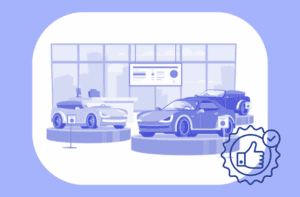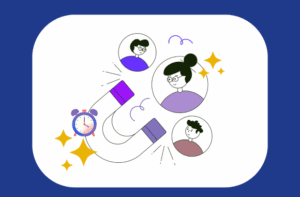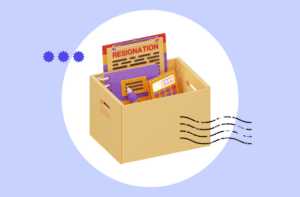While startups might employ workers from the same graduating class, mature businesses typically have a mix of older and younger workers. A multigenerational workforce is bound to have its fair share of ups and downs. Different generations bring their own attitudes to the workplace, shaped by personal experience as well as cultural landmarks from different eras:
Today, there are as many 4 or 5 generations in the workforce. Take a closer look at some of the largest generational groups to learn more about how they fit into the modern workplace.
Generations in today’s workforce
Baby Boomers
Approaching or passing their sixties, baby boomers were born from 1946 to 1964. Older workers can get nostalgic about “traditional” values and “work ethic,” but movies like Easy Rider (1969) and The Graduate (1967) show how each generation has its counterculture and rebellious side.
Generation X
Now in their forties or fifties, Gen X-ers were born between 1965 and 1980. Growing up with The Goonies (1985) and getting questionable courtship ideas from John Cusack, Gen-Xers sometimes bring the cynicism of Office Space (1999) to life in a cubicle. Overlooked in the more media-grabbing rivalry between millennials and baby boomers, Gen X may feel like they’re stuck in detention with The Breakfast Club (1985).
Millennials
Mostly in their thirties or early forties, millennials were born somewhere from 1981 to 1995. Growing up with the Lion King (1994) and Harry Potter (2001-2011), millennials have a critical perspective that can still be optimistic about changing society. The avocado toast generation has been blamed for “killing” everything over recent years, most have finally decided to avoid framing issues around generational divides.
Generation Z
Born after 1996, Gen Z includes the youngest workers today, but some are already getting into their late twenties. Instead of Napoleon Dynamite and Zooey Deschanel, Generation Z might identify more with Booksmart (2019), Love, Simon (2018) and The Fallout (2021) deal with hard-hitting realities of a generation with a very different perspective on DEI and school violence.
Benefits of a multigenerational workforce
While the differences seem more obvious, there are significant benefits to having multigenerational employees. Chiefly, a diverse workforce brings together a variety of perspectives.
Older workers tend to have more experience, and some of the younger staff should be more adaptable with new technology. Stereotypes can be misleading, and many young workers will need extensive training on business software. A multigenerational workforce has more opportunities for mentorship and career development with a mutual exchange of skills and insights.
Challenges of a multigenerational workforce
Big differences in age and experience can bring challenges, whether workers make false assumptions or simply have trouble communicating. Political arguments in the workplace can expose fault lines between different generations. Older and younger employees can read very different subtext into courtesies like “you’re welcome” and “no problem”, making short emails a source of friction.
HR tips for managing a multigenerational workforce
A multigenerational workforce has its benefits, but how can HR help different generations work together more smoothly?
Challenge stereotypes
An in-person meeting can be an awkward setting for some discussion topics, especially if minority workers might feel “singled out” by the material. Use a Learning Management System for diversity and inclusion training to set appropriate boundaries and raise awareness.
Some employees may be unaware of their own age biases. You should also revisit the age requirements and limitations in your company’s recruiting and hiring process. Help employees see how generational stereotypes can be misleading, but they may also need to make accommodations for others.
Respect preferences and boundaries
Workers should make reasonable allowances for different communication styles. Without direct confrontations, employees should be able discuss behavior that feels disrespectful or unprofessional. Workers with an informal style may need additional guidelines when it comes to communication with clients and customers.
For internal communication, especially with remote workers, managers should accommodate diverse working styles and needs. Working parents may need additional flexibility on weekly schedules.
Don’t show favoritism
Try to make accommodations and policies that work for everyone. From HR administration to resolving customer complaints, “the squeaky wheel gets the grease,” but new policies shouldn’t transparently cater to one employee’s or generation’s personal grievance.
Create learning opportunities for all
Some employees are more visual learners and others require hands-on practice. Many workers benefit from a variety of options and learning mediums. An online Learning Management System allows workers to close skill gaps and cross train in new areas. Instead of trying to address everything in orientation, you can approach learning as a long term opportunity for career development.
Make the most of your multigenerational workforce by encouraging employees to learn from each other. Younger workers lack industry experience and they may even need help with unfamiliar technology. Use mentorship and upskilling to improve retention. Instead of just training their replacements, older workers can be developing skills toward management and trainer positions.
Nurture an inclusive environment at work
The company culture reflects the combined attitudes of the whole workforce. If you’re serious about inclusivity, then you need tools like HR surveys for employee feedback. Open up anonymous channels of communication and demonstrate how you’ll take real action when responding to employee concerns.
Discover how Netchex can help businesses better manage their multigenerational workforce with HR technology.
Related articles

Solving Auto Dealership HR & Payroll Pain Points: The Best Practices Guide 2025-2026

Best Practice Guide for Improving Your Hourly Worker Employee Experience

Top 5 Reasons Why Hourly Workers Leave Jobs

